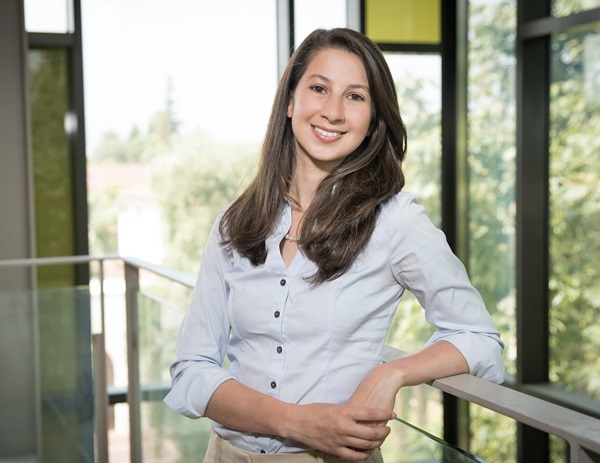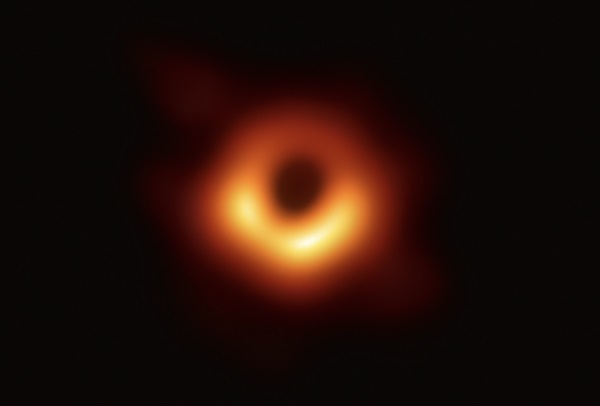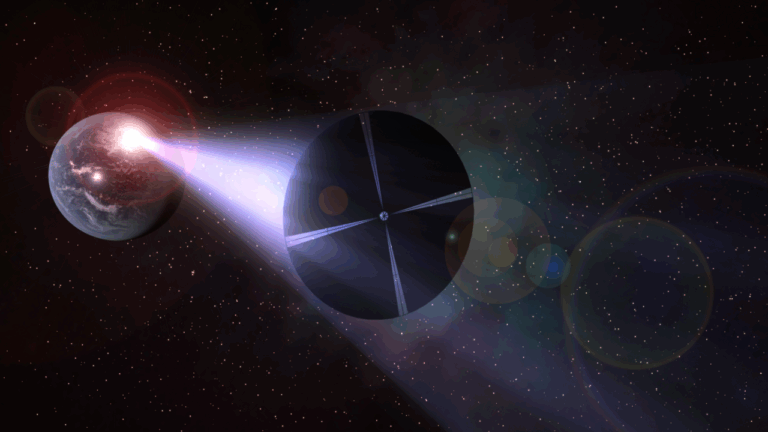Key Takeaways:
Katie Bouman was pursuing her longtime interest in computational imaging as an MIT graduate student when, in 2013, her career took an unexpected turn. In the midst of her studies, she heard astrophysicist Shep Doeleman talk about the Event Horizon Telescope (EHT) — an ambitious project aimed at obtaining the first-ever image of a black hole. Bouman was immediately hooked. While black holes were entirely new to her, the computational problems associated with imaging one were familiar. “I begged my Ph.D. advisor [William Freeman] to let me work on it,” she says. Freeman obliged.
At the time, the EHT Collaboration was focused on capturing a shot of the black hole at the center of M87, a galaxy 55 million light-years away. But even with a network of telescopes scattered around the globe, EHT couldn’t simply photograph a black hole. Bouman and others had to develop algorithms to take the incomplete data collected by the telescopes and weave it together into a composite image. “It’s like playing a song on a piano that has some broken keys,” she explains. “If enough keys are functioning, you can get the gist of the song. The trick then is to fill in the gaps in order to recover the whole song — or, in this case, recover the whole picture.”
But an infinite number of images could be constructed from the piecemeal data available to work with. Bouman led the effort to pick out the correct image among the myriad possibilities. The group accomplished this by separating the researchers into independent teams that tried out different algorithms, which converged on the same picture: a bright ring surrounding the shadow of M87’s black hole. “It took a phenomenal amount of creative work,” Doeleman says. “Katie’s ingenuity greatly accelerated EHT efforts to make the first image of a black hole.” The image was unveiled by the EHT Collaboration in April 2019.
Bouman, now 33, received her Ph.D. in 2017 and joined Caltech in 2019 as an assistant professor of computing and mathematical sciences. She is also co-leader of EHT’s Imaging Working Group, which aims to capture images of other black holes and eventually produce not only snapshots, but movies. On May 12, 2022, the EHT Collaboration achieved another breakthrough, presenting the first image of Sagittarius A*, the giant black hole in the middle of the Milky Way.
It was another accomplishment Bouman would never have imagined being part of a decade ago. “When I started on my Ph.D. research, I had no idea I would work on astronomy problems, let alone anything involving black holes,” she says. But she was lucky to come across an idea, and an accompanying project, that grabbed her. “There are tons of opportunities that lie at the intersection of different scientific fields,” she adds. “When people on both sides start learning each other’s languages, that can open up a huge avenue for new ideas.”
Make sure to explore our full list of 25 rising stars in astronomy. Check back each week for a new profile!
To get the latest astronomical news and observing content delivered directly to your door, subscribe to Astronomy magazine today!











